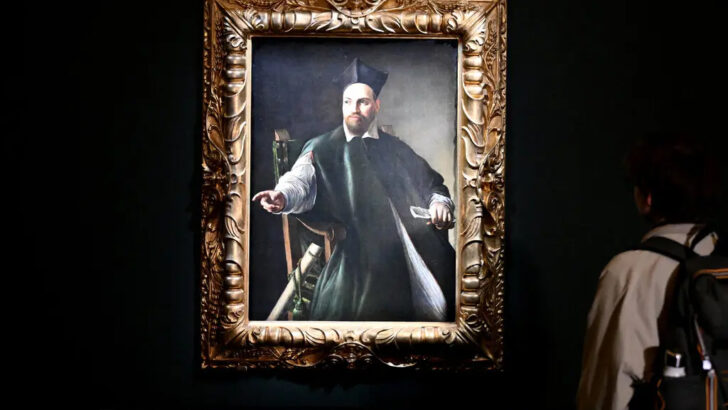Since the recovery of a lost Caravaggio of the very greatest importance in the dining room of a Jesuit residence in Dublin, a work of art now safely enshrined in the National Gallery, there has been a continuing interest in Caravaggio across Ireland.
A portrait of created by Caravaggio has just gone on show in a gallery in Rome, It has been in a private collection unseen, for some sixty years; but was only authenticated as a Caravaggio in 1963, making it an important addition to the limited number of the artist’s paintings that have survived the centuries.
The picture is a portrait of Mons. Maffeo Barberini, who would in time be elected to the papacy as Urban VIII. Never seen in a museum, the portrait, never exhibited before, will be on show February 23 2025. It is going on show in the palazzo Barberini, itself built during the reign of Pope Urban.
The author had “no intention of attributing any other than a purely human authority to the miracles, revelations, favours, and particular cases”
Though the interest of the picture as a Caravaggio is very great, it should not detract from the importance of its subject. Urban VIII is being spoken about in the context of this show as a patron of the arts who overspent on the refurbishment of Rome and the Vatican.
Yet in a wider historical context, the authoritative figure portrayed by Caravaggio, was of singular importance.
Imposed
It was an edict of Urban VII (in the papal bull Sanctissimus Dominus Noster of March 13 1625) that imposed on Catholic publications which touched on religion, that the author had “no intention of attributing any other than a purely human authority to the miracles, revelations, favours, and particular cases” which were referred to.
And moreover “the same as regards the titles of saint and blessed applied to servants of God not yet canonised, except in those cases which have been confirmed by the Holy Catholic Apostolic Roman See” of which authors had to declare themselves the obedient sons, submitting himself and all he had written to her judgement.”
It was also under Urban the VIII that Galileo faced two trials, in a case which remains controversial to this day”
The Vatican was, by this edict, imposing a continuing control over what could or could not be published; a control now largely vanished for all intents and purposes. It aimed at precluding all those kinds of wild claims about “saints” and “miracles” which are still with us.
But it was also under Urban the VIII that Galileo faced two trials, in a case which remains controversial to this day, suggesting as it did that the Vatican clung to outmoded Greek and medieval ideas of cosmography which could not really be said to have a theological foundation.
Focused
(It is worth noting though that the affair may not have been entirely focused on an argument over whether sun or the earth was the centre of the universe; but may have also been influenced by Galileo’s views on atomic theory, which seemed to some theologians to challenge the doctrine of transubstantiation.)
The painting by Caravaggio is in quite a contrast to the more familiar portrait by Bernini created about 1632. Caravaggio shows a young man of 1598 about age of 35, when he was governor of the diocese of Fano.
He is portrayed seated on an ordinary chair, a manuscript in his left hand, and his right outstretched in an authoritative, even papal manner, as if giving an order to an associate.
While it lacks the bravura of so many of Caravaggio’s surviving paintings, such as the one in the NGI, it illustrates the striking authority of the man himself rather than the calm dignity of the Bernini portrait.


 Peter Costello
Peter Costello The new Caravaggio
The new Caravaggio 